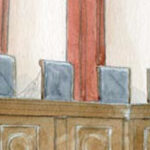On 23 April 2024, the Victorian Court of Appeal handed down
their judgment in Trustees of the Christian Brothers v DZY (a
pseudonym). 1 The case involved two prior
settlement Deeds between the Plaintiff (‘DZY’) and the
Trustees of the Christian Brothers (the ‘Trustees’)
releasing the Trustees from liability for a claim DZY proposed to
issue in a court. DZY had alleged that between 1964 and 1968 when
he was a student at a school operated by the Congregation of the
Christian Brothers (the ‘Congregation’), he was sexually
abused by two members of the Congregation. The first Deed was
entered in December 2012 for $80,000 inclusive of costs and the
second, without undoing the first, in 2015 for $20,000 inclusive of
costs. Both Deeds acknowledged that DZY did not allege that he
suffered economic loss and made no demand for such loss as part of
those settlements.
Importantly, the first Deed was entered into during a period in
Victoria when the limitation period was not yet abolished in child
sexual abuse cases and therefore a defence to the claim was
available under the Limitation of Actions Act 1958. The
limitation defence was later removed on 1 July 2015 and therefore
no longer applied when the second Deed was signed in December 2015.
Further, at the time both Deeds were entered, and as a result of
the New South Wales Court of Appeal decision in Trustees of the
Roman Catholic Church v Ellis,2 any application
against an unincorporated association such as the Congregation
would likely fail for want of a legal entity that was liable for
the claimed loss. This became known as the ‘Ellis defence’
and was abolished in Victoria from 1 July 2018 when legislative
amendments required the nomination of a proper defendant on behalf
of non-government organisations in child abuse cases.3
In light of the removal of two significant barriers to prior
litigation, s27QD and s27QE of the Limitation of Actions Act
1958 (Vic) (‘Limitation Act’) now operates to
allow prior settlement agreements entered into prior to 1 July 2018
to be set aside in whole or part when it is ‘just and
reasonable’ to do so.
In the present claim, the Trustees agreed to set aside both
Deeds in part on the basis they accepted the existence of the
limitation defence and/or the Ellis defence may have had an unjust
impact on the negotiation of the amount to settle DZY’s earlier
claims, but contended that the Deeds ought to be upheld so as to
prevent the DZY from bringing and/or maintaining a claim for
economic loss in circumstances where that claim was abandoned in
the two prior settlements.
At first instance, an associate judge of the Supreme Court of
Victoria ordered that both Deeds be wholly set aside. On appeal
there were effectively six grounds brought by the Trustees
paraphrased by their Honours Beach and Macauley JA as follows:
- The associate judge erred by applying a wrong legal principle
in finding that it was just and reasonable to set aside the deeds
after finding that DZY’s explanation for not an pursuing
economic loss claim was to avoid repayment of DSS benefits
(Centrelink payments), and also not finding that either the
limitation defence or the Ellis defence played any role in that
decision. - The associate judge erred in finding that DZY’s ability to
comprehend advice was compromised in 2012, by failing to take into
account certain other evidence. - The associate judge erred in finding that DZY felt he had
‘no choice’ but to accept offers made in 2012 and 2015, as
such a finding was not reasonably open or was made by failing to
take into account other evidence. - The associate judge erred by not taking into account the lack
of evidence to support DZY’s economic loss claim at the time of
the 2012 and 2015 deeds. - The associate judge erred in finding that DZY had continued to
assert his loss of earnings claim after the 2012 and 2015 deeds
were executed, by failing to take into account material
considerations. - The associate judge erred by taking into account the opinion of
a particular doctor in 2020 as being relevant to the impact of the
alleged abuse on DZY’s education and
employment.4
The Court of Appeal determined at the oral hearing that all
issues enumerated under grounds 2-6 could be seen as elements of
the single issue raised by ground 1. On that basis, the single
question articulated by the Court for the purposes of the appeal
was ‘in finding that it was just and reasonable to set
aside the deeds, did the associate judge act on a wrong principle
or draw an inference that was not open (ground
1)?’.5 By unanimous decision, the Court of
Appeal found in favour of the Trustees agreeing that the associate
judge erred and that the Deeds should be set aside only insofar as
they bar DZY from pursuing a claim for general damages.
In addition to the points of appeal the Trustees sought to draw
on existing authority in Pearce v Missionaries of the Sacred
Heart [2022] VSC 697 which was a case that also prevented a
plaintiff from bringing a claim for economic loss based on the
operation of a prior deed.
The decision in Trustees of the Christian Brothers v DZY (a
pseudonym) establishes authority for a number of important
points in historical abuse cases but also appeals more
generally.
What is the correct standard on appeal?
Importantly, the Court of Appeal was asked to consider and
determine the applicable standard of appellate review when
assessing the grounds of appeal concerning legal error as between
the two High Court tests, being the ‘correctness standard’
from Warren v Coombes (1979) 142 CLR 532
(‘Warren’) and the House standard as
articulated in House v King (1936) 55 CLR 499
(‘House’).
The reason for this consideration arose from the more recent
judgment of GLJ v Trustees of the Roman Catholic Church for the
Diocese of Lismore [2023] HCA 32 (‘GLJ‘)
which confirmed that a decision to stay a proceeding was not an
exercise of discretion requiring the application of the
House standard and therefore the correctness standard as
set out in Warren applied to the question on appeal. By
applying GLJ by analogy, the Trustees advanced the appeal
on the basis that the correctness standard set out in
Warren applied, namely that there was a binary answer to
whether a deed should be set aside and it was not open to decision
makers to exercise a discretion (which would attract the
House standard).
The relevant tests for the standard of appellant review are best
summarised by reference to the relevant judgments:
-
Warren v Coombes –standard of appellate review
upon an appeal by way of rehearing:
“Shortly expressed, the established principles are, we
think, that in general an appellate court is in as good a position
as the trial judge to decide on the proper inference to be drawn
from facts which are undisputed or which, having been disputed, are
established by the findings of the trial judge. In deciding what is
the proper inference to be drawn, the appellate court will give
respect and weight to the conclusion of the trial judge, but, once
having reached its own conclusion, will not shrink from giving
effect to it. These principles, we venture to think, are not only
sound in law, but beneficial in their
operation.”6 -
House v King – standard of review on appeal from
a decision involving the exercise of a judicial discretion:
“the manner in which an appeal against an exercise of
discretion should be determined is governed by established
principles. It is not enough that the judges composing the
appellate court consider that, if they had been in the position of
the primary judge, they would have taken a different course. It
must appear that some error has been made in exercising the
discretion. If the judge acts upon a wrong principle, if he allows
extraneous or irrelevant matters to guide or affect him, if he
mistakes facts, if he does not take into account some material
consideration, then his determination should be reviewed and the
appellate court may exercise its own discretion in substitution for
his if it has the material for doing so. It may not appear how the
primary judge has reached the result embodied in his order, but, if
upon the facts it is unreasonable or plainly unjust, the appellate
court may infer that in some way there has been a failure properly
to exercise the discretion which the law reposes in the court of
first instance. In such a case, although the nature of the error
may not be discoverable, the exercise of the discretion is reviewed
on the ground that a substantial wrong has in fact
occurred.”7
Beach and Macauley JJA observed that the High Court in
GLJ considered the appellate standard in the context of
deciding to grant or refuse a permanent stay, namely that the
decision as to whether a trial would be necessarily unfair or so
unfairly and unjustifiably oppressive as to constitute an abuse of
process is an evaluative judgement, but not a discretionary one. In
other words, the proceedings are or are not capable of being the
subject of a fair trial, or are or are not so unfairly and
justifiably oppressive as to constitute an abuse of
process.8
The Trustees in this appeal submitted that the question of
setting aside a previous settlement under s27QD and s27QE of the
Limitation Act similarly does not involve the exercise of
discretion even though it requires an evaluative judgement. In
contention, DZY argued that it would be wrong to apply that
standard and that the proper standard would be the House
standard, arguing that the statutory test in s27QE admits a range
of legally permissible outcomes and was therefore
discretionary.
In their reasons, and in line with the approach taken by the
Court in GLJ in respect of the permanent stay provisions,
Beach and Macaulay JJA considered the context of the amendments of
the Limitation Act and the insertion of s27QE and s27QF.
This included consideration of the community’s confidence in
the adversarial system to deliver just outcomes and that judgments
and settlements should therefore be accorded a high degree of
protection and only be set aside when that judgment or settlement
has been obtained by a process or in a circumstance that violates a
clear principle fixed by the law. On this basis they found
that:
“93. In this case, the applicable legal principle set
by Parliament is that a court must be satisfied that it be
‘just and reasonable’ to set aside a judgment. It is that
legal criterion that fixes the boundary that must be crossed before
a judgment or settlement of a personal injury claim for child
abuse, otherwise validly obtained, may be set aside. It is only if
that legal criterion is satisfied that a defendant who has
bargained for a release of any further legal liability should be
deprived of that right, or a plaintiff who has relinquished the
right to further pursue a claim should be permitted to relitigate
it.
94. These contextual considerations aid the construction of
ss 27QC and 27QE. They support the view that the ‘just and
reasonable’ test should not be construed as a mere gateway that
enlivens a discretion to choose whether or not to set aside a
previous settlement, but rather, as a strict legal rule which, if
satisfied, will require that the settlement be set aside. If that
criterion is satisfied, the settlement will be set aside because it
was obtained in circumstances that are incongruent with a fair
adversarial system that allows parties to agree a just outcome to
bring an end to legal rights and liabilities.
95. Although there may be a range of factors to be taken
into account, and the strength of them weighed, ultimately the
question is whether it is just and reasonable to set aside the
judgment. The question is not whether there is a risk of injustice
or unreasonableness lying somewhere on a scale between high and
low, calling for a personal judgment as to whether the previous
settlement should be set aside depending on the position on that
scale.
96. The legal rule does not describe a range of legally
permissible outcomes. It is a rule that leads to binary outcomes.
Adopting the language of GLJ, either it is just and reasonable that
the parties should not be bound by a previous judgment or
settlement, or it is not.”
Therefore, their honours conclude that the question of whether
to set aside a Deed in whole or in part in s27QE of the
Limitation Act is not a discretionary question but a
binary one. They considered that on proper construction of the test
in s27QE(1)(a), the provision does not give the judge a range of
options once generally satisfied that it is just and reasonable to
set aside a settlement to some extent, and the making of any orders
under s27QE(1)(b) is conditional on whether it is just and
reasonable to do so.9 On this basis, their honours
concluded that the power to set aside settlement agreements is not
discretionary and as such any appellate review of a decision made
under s27QE(1) is to be approached on the correctness standard.
Beach and Macauley JJA otherwise confirmed that if a House
standard was applied, they would still be satisfied on that test
that the appeal ought to be allowed.10
What does ‘just and reasonable’ mean?
When considering the content of ‘just and reasonable’ in
s27QE, Beach and Macauley JA reference the decision of Roman
Catholic Trusts Corporation for the Diocese of Sale v WCB
(‘WCB’).11 The Victorian Court of
Appeal in WCB recognised that s27QE of the
Limitation Act does not prescribe matters that the Court
should have regard to in determining whether it is just and
reasonable to set aside a settlement.12 That said, in
approaching the construction of the phrase, the Court in
WCB considered at length the two legal obstacles that
confronted plaintiffs in historical abuse matters, that is, the
limitation defence and the Ellis defence as well as the legislative
removal of those obstacles and the purpose for enacting s27QE of
the Limitation Act.
Beach and Macauley JJA in this case confirmed that in WCB,
‘the Court said that ss27QD and 27QE were introduced to enable
claimants who had suffered historical sexual abuse to litigate
their claims where, due to the unfair legal obstacles that
obstructed their path, they had previously settled those claims on
terms that were not just and reasonable.’13 By
determining those obstacles as unfair, the legislative intention
was clearly to allow agreements to be set aside against that
backdrop of technical defences. In confirming this, Beach and
Macauley JJA found that:
- The s27QE remedy requires that a settlement that is sought to
be set aside was entered into at a time when the limitation and/or
Ellis defences were capable of unfavourably influencing settlements
for claimants. That influence is what led to the
‘mischief’ which s27QE is seeking to remedy and
‘that observation reinforces the centrality of the actual
influence of one or both of those two barriers in the consideration
of whether it is just and reasonable to set aside a settlement
agreement.’14 - At least in an ordinary case, it would be expected that one of
the two legal barriers (the limitation or Ellis defence) would play
some part in explaining why the claimant entered into the
settlement agreement now sought to be set aside and thus a cogent
ground would exist to conclude that it was just and reasonable to
set aside the settlement. Their honours confirmed that ‘if
no finding was made that either legal barrier had such an impact,
it is doubtful that any cogent ground would exist to conclude it
was just and reasonable to set the settlement
aside.’15 - While the Court does not deny that, other than the actual
influence of those legal obstacles, there could be other additional
factors that might be legitimately taken into account when
considering whether it is just and reasonable to set aside a
settlement, including for example the prospects of success, the
respondent’s conduct, unequal bargaining power or any feelings
of guilt or shame, this is not the particular mischief that s27QE
was seeking to remedy.16 On this basis, Beach and
Macauley JJA found that ‘consideration of the actual
influence of the two legal obstacles is central to the
determination of whether it is just and reasonable to set aside a
settlement’ and that ‘apart from the influence of
those obstacles, other factors should be seen as supportive rather
than leading factors in determining whether it is just and
reasonable to set aside a settlement.‘17
Application of the principles and decision of the majority
Beach and Macauley JJA confirmed that the question to be
answered in the appeal was ‘whether the associate judge
erred in finding that it was just and reasonable to set aside the
two deeds in their entirety – rather than set them aside only
insofar as they barred a claim for general damages, leaving intact
the bar to a claim for damages for economic
loss.’18 In applying the correctness standard
from Warren as set out above, their honours found that the
trial judge was wrong to conclude that it was just and reasonable
to set aside the deeds in their entirety and that, deciding the
matter for themselves, they would find that it was just and
reasonable to set aside the deeds only insofar as they bar a claim
for general damages.19
In their reasoning, Beach and Macauley JJA had consideration to
the following relevant factors:
- The fact DZY was in receipt of Centrelink payments for the care
of his son and was worried that the Department of Social Services
(DSS) would clawback his carer’s pension was ‘probably
the dominant motivation’ in deciding not to pursue
economic loss;20 - When DZY had the chance to do so, he did not say that any other
factor motivated his decision not to claim economic loss and more
particularly he did not identify the concern about the operation of
the limitation or Ellis defences as a reason not to pursue that
aspect of the claim;21 - Little weight was given by the appeal judges to the evidence
that the plaintiff was drinking heavily and had anxiety around the
time of both settlements which allegedly impacted his comprehension
of the settlements;22 - On both occasions DZY signed the Deeds he was not rushed
(noting offers were left open for a considerable period of time),
was legally represented, and in 2012 had a support person
present;23 - DZY’s evidence that he felt he had ‘no choice’ but
to settle was not related to any conduct on the part of the
Trustees and was not relevant to his decision not to pursue a claim
for economic loss; 24 and - There was no positive finding that DZY’s decision not to
pursue an economic loss claim was influenced by the limitation or
Ellis defences.25
Overall, despite finding that there would be no other prejudice
to the Trustees from the continuation of the economic loss claim,
beyond the loss of the release from the exposure to such a claim
acquired through the bargain secured under the Deeds, Beach and
Macauley JJA (as the majority) found that as the decision to
abandon any economic loss claim was for issues unrelated to the
relevant defences, it was not just and reasonable to set aside the
deeds insofar as they barred pursuit of the economic loss
claim.26 On this basis, the appeal was allowed and
orders made that pursuant to s27QE(1)(a) of the Limitation
Act, the 2012 Deed and 2015 Deed would be set aside only in
part, such that DZY would be permitted to bring his claim for
damages excluding any economic loss.
The judgment of Lyons JA
In a separate judgment, Lyons JA agreed with the majority as to
the ultimate outcome of the application and the appeal and the
orders proposed by the majority. Lyons JA did however find that he
did not consider it necessary to conclude that:
“the court’s power under s27QE is fettered such
that it is doubtful that any cogent ground would exist to conclude
it was just and reasonable to set aside a settlement agreement if
no finding was made that either the limitations period or the Ellis
defence had a ‘material impact’ on the claimant’s
decision to settle his or her claim and/or was a ‘leading’
factor in this decision.”27
Lyons JA instead suggests that ‘in light of the language
used in s27QE, the exercise of the power under that section will
depend upon all the relevant circumstances.‘28
On his assessment of the wording and intent of s27QE, his honour
considered that the court should not be so constrained so as to
limit the enquiry to whether a limitations or Ellis defence factor
was material to the decision making of a plaintiff, but that the
court ought to consider all of the relevant circumstances in which
a settlement was entered into.29
Lyons JA confirms that while in an ordinary case, one of the two
legal barriers would play some part in determining whether it was
just and reasonable to set aside a settlement agreement, based on
the circumstances of DZY’s claim he did not consider it
necessary to conclude that a claimant needs to establish that one
or more of the relevant defences has a ‘material’ impact on
the claimant’s decision to settle the claim, nor does it need
to be a ‘leading’ factor before the court can exercise the
power under s27QE of the Limitation Act as found by the
majority.30
Regardless of the agreed application of the test in s27QE, Lyons
JA found that in the circumstances of this claim, the evidence did
not allow the court to be satisfied that it was just and reasonable
to set aside the prior Deeds in full and that DZY should be barred
from bringing an economic loss claim.
His honour otherwise agreed that the correctness standard is the
relevant standard to be applied in cases concerning whether it is
‘just and reasonable’ to set aside a Deed.
Implications of the Court of Appeal decision
The practical effect of this decision is that DZY will not be
able to recover damages for economic loss, however, the
implications of this decision are far reaching. In particular:
- It has been confirmed that the power of the Court to set aside
a prior settlement or judgment in accordance with s27QE of the
Limitation Act is not a discretionary one. As such, any
appeals on decisions made under that section will be required to
meet the correctness standard but not the House
standard. - In determining whether it is ‘just and reasonable’ to
set aside a prior deed (in whole or part), the leading factor in
any decision must be whether the limitation and/or Ellis defences
were material factors impacting the settlement and leading to an
unfair outcome. Any other factors impacting a claimant’s
decision to accept an earlier settlement should be seen as
supportive factors only in determining whether it is just and
reasonable to set aside a settlement. - As in this case, it may be that the relevant defences were
material factors in leading a claimant to accept a lower
settlement, but not material factors in a decision being made to
abandon a head of damage entirely. In these cases, it would be
appropriate for the prior settlement to be set aside in part to
only allow for a claim for the heads of damage which were impacted
by the relevant defences. - In any case, a court is obliged to take into account all of the
circumstances of a particular settlement and not simply conclude
that because the limitation and/or Ellis defences were available
that this alone gives rise to a right to set aside a Deed in
full.
While this decision considered the relevant provisions of the
Limitation of Actions Act 1958 (Vic), it could be seen as
persuasive precedent in any jurisdiction where a Limitation Act
contains provisions allowing for prior deeds in claims relating to
historical child abuse to be set aside when it is ‘just and
reasonable’ to do so and when the legislative context of those
amendments, and the applicable dates in the relevant provisions,
reflect the abolition of the limitation and Ellis defence in those
jurisdictions.
Footnotes
1 [2024] VSCA 73 (23 April 2024).
2 (2007) 70 NSWLR 565; [2007] NSWCA
117.
3 Legal Identity of Defendants
(Organisational Child Abuse) Act 2018.
4 Trustees of the Christian Brothers v DZY
(a pseudonym) [2024] VSCA 73 [14].
5 Ibid [15].
6 (1979) 142 CLR 531, 551 (Gibbs ACJ, Jacobs
and Murphy JJ).
7 (1936) 55 CLR 499, 504-505 (Dixon, Evatt and
McTiernan JJ).
8 Trustees of the Christian Brothers v DZY
(a pseudonym) [2024] VSCA 73 [68] referring to GLJ v
Trustees of the Roman Catholic Church for the Diocese of
Lismore (2023) 97 ALJR 857, 865 [15] (Kiefel CJ, Gageler and
Jagot JJ).
9 Ibid [98-102].
10 Ibid [125-133].
11 (2020) 62 VR 234.
12 Trustees of the Christian Brothers v
DZY (a pseudonym) [2024] VSCA 73 [103] referencing
WCB (2020) 62 VR 234, 270 [121].
13 Ibid referencing WCB (2020) 62 VR
234, 266 [112].
14 Ibid [109].
15 Ibid [110].
16 Ibid [111-112].
17 Ibid [113].
18 Ibid [125].
19 Ibid [134].
20 Ibid [144].
21 Ibid [145].
22 Ibid [146].
23 Ibid [147].
24 Ibid [148];
25 Ibid [150].
26 Ibid [149 – 150].
27 Ibid [155].
28 Ibid [156].
29 Ibid [156-164].
30 Ibid [164-165].
The content of this article is intended to provide a general
guide to the subject matter. Specialist advice should be sought
about your specific circumstances.
#Case #summary #Historical #child #abuse #Trustees #Christian #Brothers #DZY #pseudonym #VSCA










